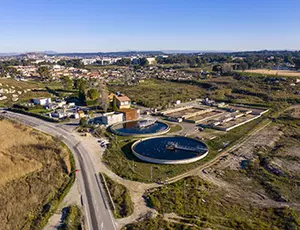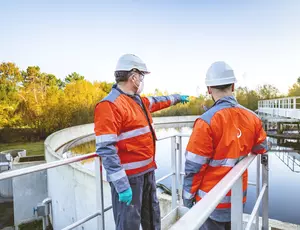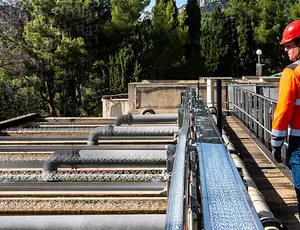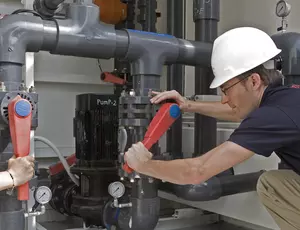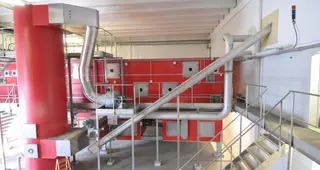Biocon™ ERS (Energy Recovery System) is a safe and sustainable sludge dryer and combustion system that combines the efficiencies of a convective air, medium -temperature belt sludge dryer with a biosolids treatment furnace to recover heat from combusting biosolids while treating PFAS chemicals.
Overview
Biocon is a sludge dryer unit designed for drying dewatered sludge intended to reduce the volume and weight of municipal sludge waste for hauling to landfills or to be used as a Class A biosolids for land application.
How does Biocon work?
The sludge dryer unit comprises two moving belts that allow the sludge to reach a dryness of 90% using hot air circulation. It operates with a drying air temperature range between 120-170°C on the first zone and 80-100°C on the second zone.
The system uses an innovative sludge processing system within the dryer to deposit thin strings of dewatered sludge on the top drying belt. The sludge feeding system ensures a large evaporation surface area while the circulated drying air evaporates the water from the sludge to eliminate back mixing.
The sludge spends 90 minutes in the unit to ensure disinfection, and the dried sludge can meet Class A regulations and be reused for land application without further treatment.
The energy required for the sludge dryer is supplied indirectly by a heat exchanger that raises the temperature of the drying air. A circulation fan provides the necessary air velocity around the sludge strings to ensure water evaporation.
To remove the moisture from the wet drying air and ensure a low odor operation, a certain amount of the drying air is taken into a condensing air loop. This is then sent through a condenser before returning to the drier.
Biocon ERS
If needed, to offset the use of an external energy supply to power Biocon, the newly dried sludge can be reused by installing the Biocon ERS, downstream from the drying unit. Incorporating the ERS results in an autogenous system by burning the end product and using the heat generated to fuel the dryer.
Biocon ERS reduces the total output of the sludge dryer unit to 5-10% of the original sludge cake quantity and provides thermal energy for the drying process.
It is an automated and self-sufficient system and includes a movable grate furnace for burning the dried sludge, a heat exchanger for the drying air and the gasses produced from burning the biosolids and a compact gas treatment system.
The ERS system can also operate in gasification mode to achieve biochar as an end product if desirable.
Biocon ERS is currently being applied in the United States addressing PFAS in both air emissions and residual solids for a safe and sustainable solution.
Both the Biocon sludge dryer and the Biocon ERS comply with current EU and US rules, regulations and directives on pathogen reduction and are designed to be one of the safest dryers on the market while maintaining easy and efficient operations.
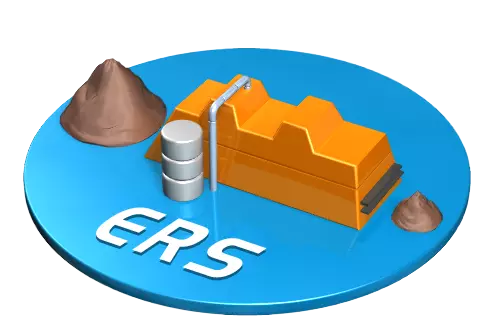
Features and benefits

Safe operation
Low drying temperature and minimal dust emission

Flexible
Energy and heat source

Low odor released
Negative pressure drying air system

Designed for intermittent as well as non-stop operation

Low operation and maintenance costs

Delivers disinfected and granulated dried biosolids

The end product meets the US EPA Class A requirements

Easily expanded with Biocon Energy Recovery System (BERS)

Used for PFAS treatment
Applications
Services
- Spare parts and consumables
- Planned service and preventive maintenance
Product range and resources
Biocon™ ERS - energy recovery system
The Biocon ERS uses the dried biosolids from the Biocon dryer that is incinerated in the ERS furnace which will produce a flue gas that can be used to heat the dryer. The Biocon ERS can operate at higher temperatures to treat PFAS compounds in the solid and gas phases along with reducing the sludge volume
Contact
Municipal wastewater treatment plants are constantly implementing technologies which maximize efficiencies, reduce costs, and integrate sustainable practices. Sludge treatment is no different. We are proud to offer Biocon and Biocon ERS to help wastewater treatment plants address the challenges faced in the evolving biosolids market by offering sludge drying and thermal treatment solutions specially designed to be the safest and most reliable in the market.

Jeff Mocock
VP of Engineering, Veolia Water Technologies
Contact Jeff through his LInkedIn account
FAQ about Biocon™ ERS
What is sludge in wastewater treatment?
Sludge in wastewater treatment refers to the semi-solid residual material that is produced during the treatment of wastewater. Sludge typically contains a mixture of water, organic and inorganic solids, and microorganisms.
After sludge is generated, it undergoes further treatment and processing to reduce its volume and improve its stability. Common methods for sludge treatment include:
- Thickening: Increasing the concentration of solids in the sludge by removing excess water.
- Stabilization: Reducing the organic content of sludge to minimize its potential for odor and pathogen generation.
- Dewatering: Removing additional water to produce a more solid and manageable sludge cake.
- Digestion: Biological treatment processes to further break down organic matter and pathogens.
- Drying and combustion: The disposal volume of sludge can be reduced with application of Biocon and Biocon ERS.
- Disposal or reuse: Dried sludge may be landfilled or, in some cases, reused for agricultural purposes or as a soil conditioner.
Effective management of sludge is a crucial aspect of wastewater treatment to minimize environmental impact and ensure compliance with regulations. Modern wastewater treatment plants often implement advanced technologies to optimize sludge handling and disposal while recovering energy or valuable byproducts from the process.
What are PFAS?
PFAS, or per- and polyfluoroalkyl substances, are a group of human-made chemicals used in various industrial applications and consumer products since the 1940s. They are known for their resistance to heat, water and oil, which makes them useful in a variety of products such as non-stick cookware, water-resistant clothing, firefighting foams and food packaging materials.
The unique properties of PFAS, such as their stability and resistance to degradation, have led to their persistence in the environment and bio-accumulation in living organisms. This persistence has raised concerns about their potential adverse effects on human health and the environment.
Case Studies
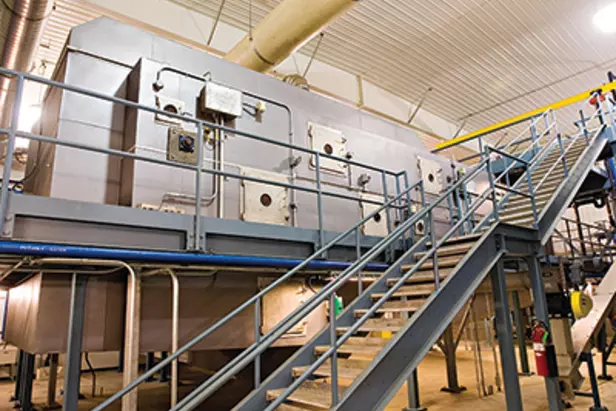
La ville de Buffalo était confrontée à plusieurs défis : hausse des coûts d'élimination, problèmes d'odeurs et accroissement de la capacité de l'usine en prévision de l'augmentation de la population, de 15 000 habitants à environ 30 000 en 2025. En outre, elle devait respecter la norme relative à l'élimination des biosolides de classe A (US EPA Part 503 Class A) et répondre aux contraintes d'emprise limitée sur le site. L'efficacité du sécheur Bioco® et du système ERS a permis de réduire la quantité de biosolides et de les manipuler facilement et en toute sécurité sur la station d'épuration de Buffalo. Cette solution a été installée dans un espace restreint, qui permet de contenir les odeurs, et elle satisfait les exigences de classe A, tout en assurant à l'usine une économie de 70 à 80 % en énergie thermique, d'où une réduction de son empreinte carbone.
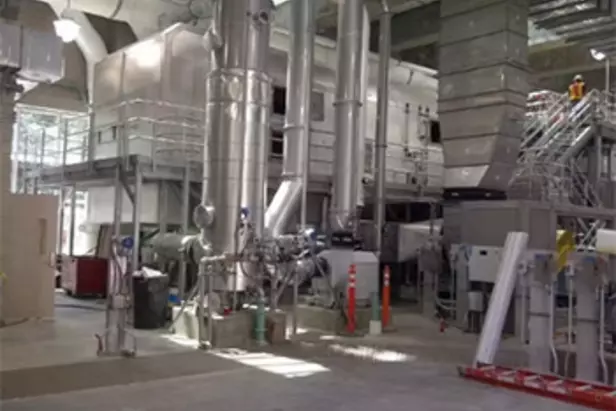
The Picnic point wastewater treatment facility faced a critical capacity issue, grappling with unsustainable biosolids management through costly incineration and difficult sludge disposal. Biocon Dryer system enabled the Alderwood water and wastewater district to significantly reduce biosolids volume, produce Class A biosolids meeting stringent environmental standards, and create a valuable end product. Implemented within a compact footprint, the system also eliminated odors through advanced control measures. The BioCon Dryer not only resolved immediate capacity and disposal issues but also transformed the plant's relationship with the surrounding community. By producing odor-free, high-quality biosolids, the facility gained local support and positioned itself as an environmental leader.



